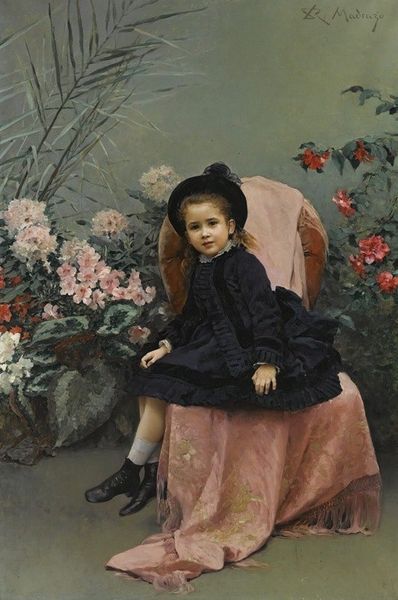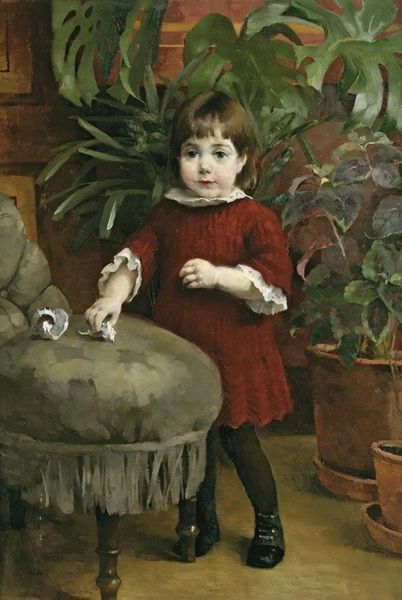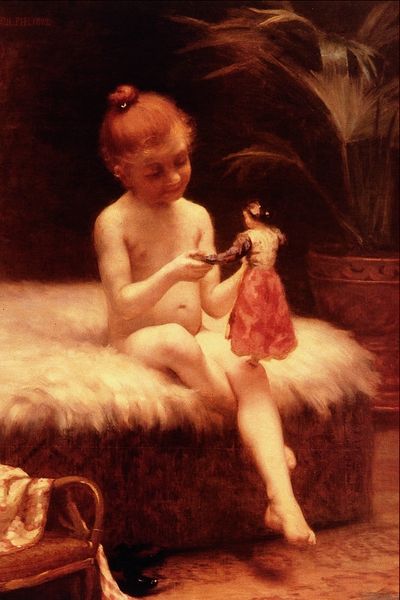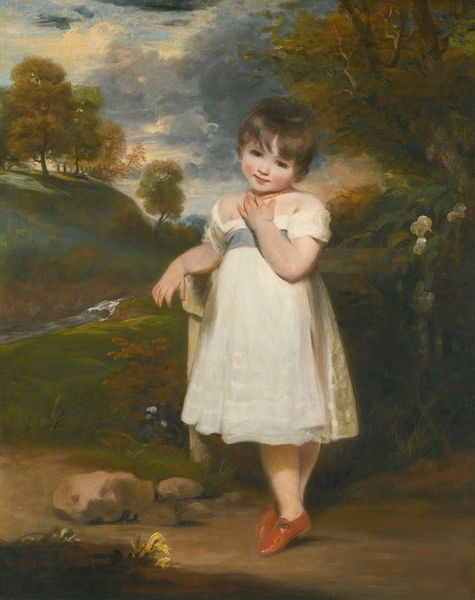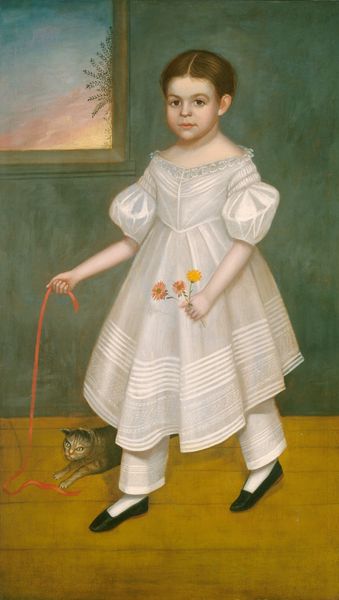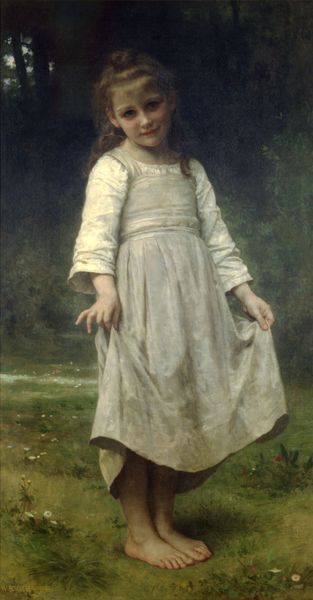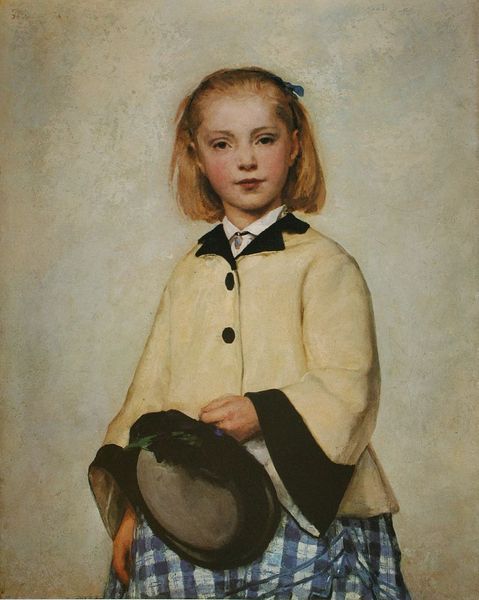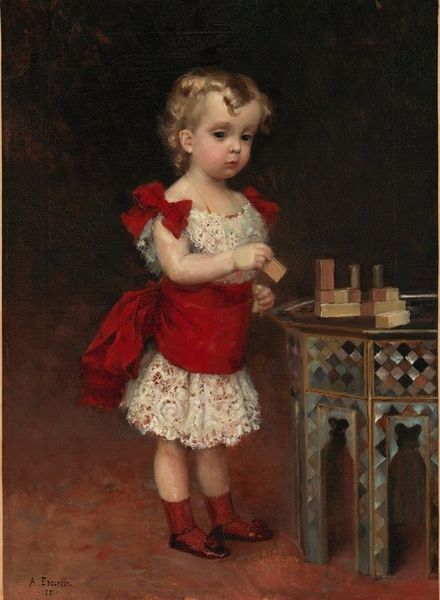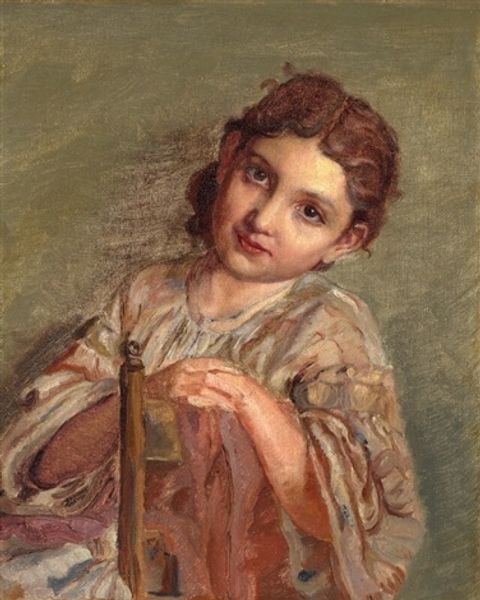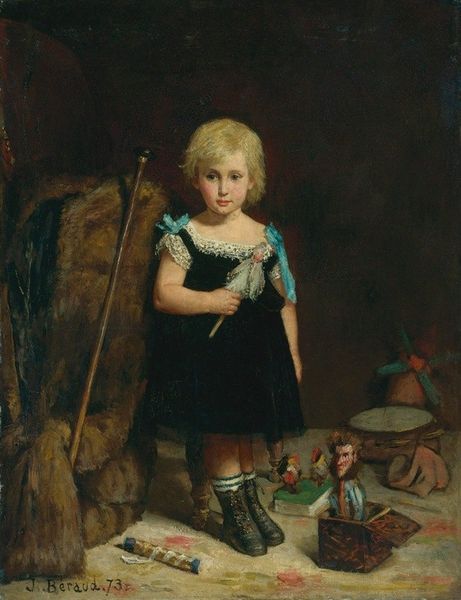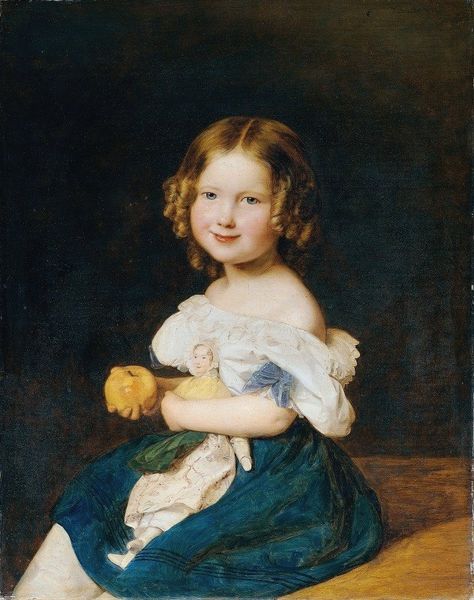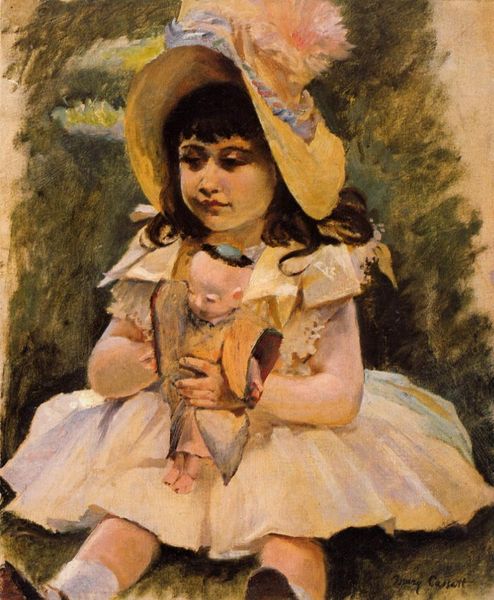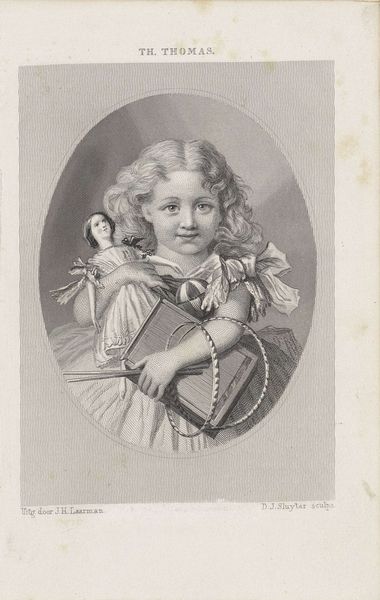
painting, oil-paint
#
portrait
#
painting
#
oil-paint
#
figuration
#
historical fashion
#
child
#
male-portraits
#
romanticism
#
genre-painting
#
italian-renaissance
#
italy
#
realism
Dimensions: 110 x 85 cm
Copyright: Public domain
Curator: Francesco Hayez painted this portrait of Don Giulio Vigoni as a child around 1830. Editor: My initial thought is about how constrained the child appears—almost doll-like. The pose, the clothes, even the pensive gaze seem staged. Curator: It's interesting to view this work through a lens of social constraints of that era, particularly the performance of gender and class expectations. Hayez was working in a period where portraiture often served as a tool for projecting status and perpetuating societal norms. We have this very young boy dressed in a style reminiscent of the aristocracy with a rather unsettling, asexual outfit that makes you question gender stereotypes of the era. Editor: Absolutely. Looking at the iconography, doves often symbolize peace and innocence, common for children's portraits. The large vase with the lion head motif though… That introduces a subtle note of power, almost a prediction of the child's future status. Lion symbols go back thousands of years and have symbolized, strength, royalty and courage Curator: Those juxtapositions speak volumes, don't they? The vulnerability of childhood juxtaposed with symbols of power and control. This highlights the political dimensions of personal representation. Editor: Consider the visual narrative Hayez constructs. The child stands within what seems to be nature yet everything feels curated: a park with that giant neoclassical urn, tied doves, theatrical lighting and staging. It really accentuates the idea of controlled freedom. This resonates strongly in an era undergoing shifts in power dynamics. Curator: And beyond gender, it raises questions about agency—or the lack thereof—in childhood. The boy is literally framed within a world shaped by adults. Analyzing portraits like this one from the romanticism period reveals not only the evolution of visual styles but also power structures and cultural values. Editor: It's intriguing how one image can hold so much layered information, making you think about representation itself. So what seemed a charming children’s painting becomes a powerful statement about class, social expectation, freedom and power! Curator: Exactly! A beautiful encapsulation of how individual identity can reflect collective historical forces.
Comments
No comments
Be the first to comment and join the conversation on the ultimate creative platform.
